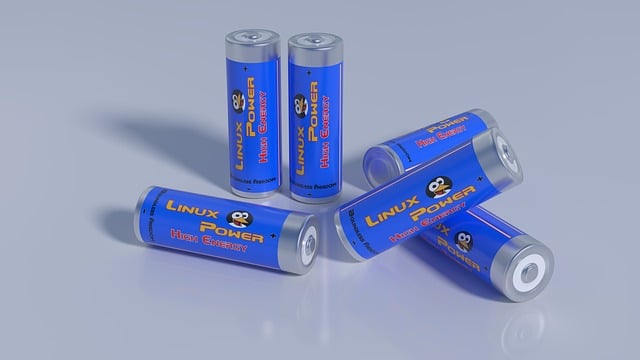Precast and modular construction is revolutionizing the building industry with improved quality, durability, and safety standards compared to site-cast concrete, particularly for complex projects like bridges. Bridge structure renderings play a crucial role in visualizing designs before production, reducing construction time, enhancing collaboration among stakeholders, and facilitating design modifications. Successful case studies demonstrate the benefits of precast concrete in bridge construction, with advanced renderings powered by technology optimizing designs, anticipating issues, and streamlining processes, shaping the future of infrastructure development.
In today’s fast-paced construction industry, precast and modular structures are revolutionizing building processes. This article explores the modern approach of precast and modular construction, highlighting its advantages over traditional methods. We delve into the power of bridge structure renderings in visualizing and optimizing designs, with case studies showcasing successful implementations. Furthermore, we examine future trends, emphasizing advanced renderings’ role in enhancing efficiency and pushing the boundaries of sustainable construction.
Understanding Precast and Modular Construction: A Modern Approach
Precast and modular construction is a modern approach that has been transforming the building industry. This innovative technique involves creating components—such as walls, floors, or even entire bridge structures using precast concrete—in a controlled factory environment before transporting them to the construction site for assembly. Bridge structure renderings play a crucial role in this process, enabling architects and engineers to visualize and refine designs before production.
By leveraging precast and modular methods, builders can achieve remarkable efficiency gains. Precast components are typically stronger, more durable, and less prone to errors than site-cast concrete, ensuring higher quality and safety standards. Modular construction also streamlines the building process by allowing multiple teams to work simultaneously on different parts of a project, reducing overall construction time. These benefits make precast and modular construction particularly attractive for complex projects like bridges, where precise engineering, consistent quality, and rapid deployment are essential.
The Advantages of Using Bridge Structure Renderings
Bridge structure renderings offer a multitude of advantages in the construction industry, making them an increasingly popular choice for efficient and effective building processes. Firstly, they enable detailed visualisation of complex structural designs before physical construction begins. This early stage clarification aids in identifying potential issues, allowing for informed decision-making and cost-saving measures. By simulating the final product, architects and engineers can ensure precision and accuracy, minimising on-site errors.
Moreover, bridge structure renderings facilitate better communication between project stakeholders. Visual representations make it easier to convey ideas and concepts to clients, contractors, and regulatory bodies. This streamlined collaboration enhances project management, expedites approvals, and contributes to a smoother construction timeline. The use of these renderings also promotes flexibility, enabling quick modifications to designs without requiring extensive physical rework.
Precast and Modularization in Practice: Case Studies
Precast and modular construction techniques have gained significant traction in the industry, proving their worth through numerous successful case studies. One notable example is the implementation of precast concrete in bridge structure renderings. By prefabricating sections off-site, construction teams can achieve faster assembly on-site, minimizing delays caused by weather conditions or labor shortages. This method has been instrumental in completing complex bridge projects ahead of schedule and within budget constraints.
For instance, a recent case study showcased the construction of a modern, multi-span bridge using precast components. The modular design allowed for efficient transportation of individual sections to the project site, where they were seamlessly connected, forming a robust and aesthetically pleasing structure. This approach not only streamlined the construction process but also enhanced safety by reducing the need for extensive on-site casting and formwork.
Future Trends: Enhancing Efficiency with Advanced Renderings
As construction technology evolves, advanced renderings play a pivotal role in shaping the future of efficient bridge structure construction. With precast and modular methods gaining traction, realistic and precise visual simulations are becoming increasingly vital. These technologies enable engineers and architects to create detailed 3D models, offering a comprehensive view of the final structure. By utilizing bridge structure rendering software, professionals can anticipate potential issues, optimize designs, and streamline the overall building process.
The integration of artificial intelligence and virtual reality further enhances this trend. AI-powered renderings can automatically generate accurate visuals from design data, while VR allows for immersive walkthroughs, enabling better client communication and project management. These advanced tools not only improve efficiency but also contribute to more sustainable and cost-effective bridge construction, setting the stage for future infrastructure development.
Precast and modular construction, aided by advanced bridge structure renderings, is transforming the building industry. By streamlining design and visualization processes, these technologies offer unparalleled efficiency gains. As demonstrated through various case studies, precast and modularization methods reduce construction timelines and costs while enhancing structural integrity. Looking ahead, continued advancements in bridge structure rendering technology promise to further revolutionize how we build, paving the way for more complex, sustainable, and affordable structures globally.
